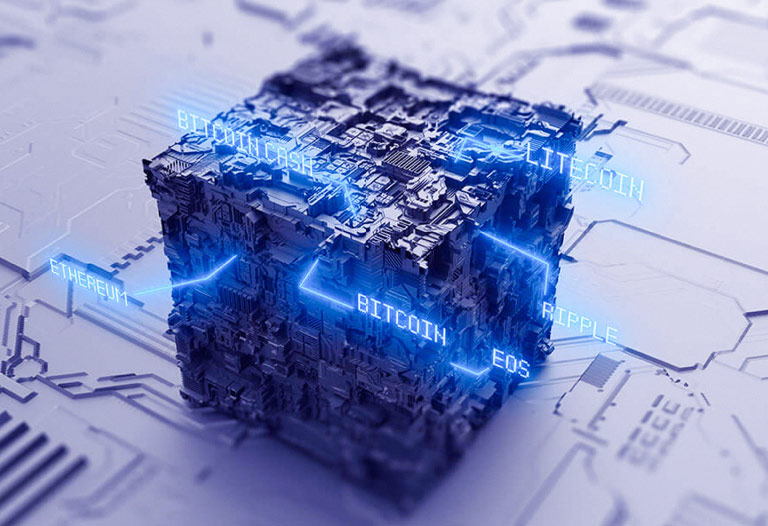
Table of Contents
ToggleIf you are a Bitcoin user, one of the most important concepts you should know is the Bitcoin mempool. You may not know what it is, but whenever you make a transaction with this cryptocurrency, this tool intervenes. When you make a Bitcoin transaction, the transactions are not processed or confirmed immediately. As they are not processed immediately, these transactions are stored temporarily in the mempool or, in other words, the Bitcoin memory pool.
The mempool has one main purpose and that is to buffer or hold transactions. When transactions arrive in this room they are stored until the miners start selecting transactions to be included in the block they are solving. This process is necessary to finally move the transactions from unconfirmed to confirmed status. In this last phase the transaction is successfully confirmed and becomes integrated into the blockchain.
In this article we will tell you all about the mempool, why it is important and how it works in Bitcoin.
Why is Mempool important?
A transaction waiting room may not seem entirely necessary to you, but it is. The first thing to keep in mind is that Bitcoin works as a network of nodes connected to each other, all within a completely decentralized P2P scheme. In this mechanism there are no central servers that control everything. This has led the Bitcoin system to develop protection mechanisms against different types of attacks.
Among these mechanisms is the creation of a predictable block generation and transaction confirmation scheme. In other words, it is Bitcoin’s ability to generate blocks every 10 minutes on average and on a regular basis. The process of creating blocks at defined time intervals is responsible for miners being able to successfully mine. In addition, this process prevents certain operations from negatively affecting the network. Among these operations are the generation of invalid transactions en masse. These operations could end up blocking the network and prevent users from using it freely.
The solution: a transaction pool
Addressing these potential problems, the best apparent solution was the creation and development of a mempool. With the mempool in place, every transaction that is created and sent to the network first goes through the waiting room. Thanks to this waiting room the transaction will never get lost, it will simply be in this room waiting for a miner to decide to include it in his block. With this system, Bitcoin network users can make any transactions they want. The rest of the work will be done by the network. It will simply process them over time. In the Bitcoin network about 2100 transactions are processed every 10 minutes, or in other words, every time a new block is generated. This is how the mempool accumulates large amounts of transactions, however, despite being accumulated, the network will not stop processing them.
It should be noted that this system would not be possible in situations such as PayPal. In this system the centralization of the system allows a great speed in the transactions, but these are susceptible to moments of high demand or attacks that generate a high demand of its centralized servers.

How does the Mempool work?
As mentioned above, the mempool is a temporary storage space where cryptocurrency transactions wait. Initially, this task is easy to perform. In the case of Bitcoin, the functions of a mempool are regulated through the BIP-35. If you don’t know what it is, a BIP is a document in charge of standardizing certain procedures or functions within the Bitcoin network.
The operation of the Mempool is divided into 2 phases, which will be described below:
First phase: Receipt of the transaction
In the first phase, the mempool is responsible for receiving the transactions that have been generated by users within the network. This is a relatively simple process, taking no more than 10 seconds to complete. Once the first step has been completed, the transaction will begin a lengthy confirmation process. To begin this process, the transaction must be transmitted to the network for processing.
Now that we know the first step, we must take into account that this process is carried out on a massive scale. The reality is that hundreds of thousands of users perform this process at the same time and in a relatively short period of time. This large number of transactions generates high transaction traffic on the network. Obviously, this traffic is efficiently controlled and we will see this in the next phase.
This first part is where the Mempool performs its most important role, receiving all transactions from the network. This whole process is carried out with the objective that the transactions are effectively processed by the miners in due time.

Second phase: Access to transactions
In this second phase, the cryptocurrency miners see all the transactions that have been made by Bitcoin users. We must remember that each and every one of these transactions is in the waiting room to be processed.
To choose transactions, miners enter the mempool and select the transactions they want to include in the next block in the chain. As transactions are chosen, the mempool frees up more space and the network becomes more balanced. This means that as fewer transactions are stored in the mempool there is less pressure on the network and this leads to faster commits. For this reason, when a mempool is “full“, commits take longer to complete.
The process of transaction resolution by miners is relatively fast. However, miners will take longer to confirm your transaction when the mempool is full of transactions. When this happens, users tend to pay more commissions in order for the miners to give more priority to their transaction. The more commission a user pays, the more likely their transaction will be chosen quickly.








